
Earwigs are abundant in the moist and dark nooks of the garden.
Moving a flower pot or overturning a stone can be a startling reminder of their presence, revealing dozens of them hiding out in the cool darkness. When their cover is disturbed, earwigs will quickly disperse in every direction to seek out a new shadowy cavern.
The thing is, earwigs are mostly misunderstood.
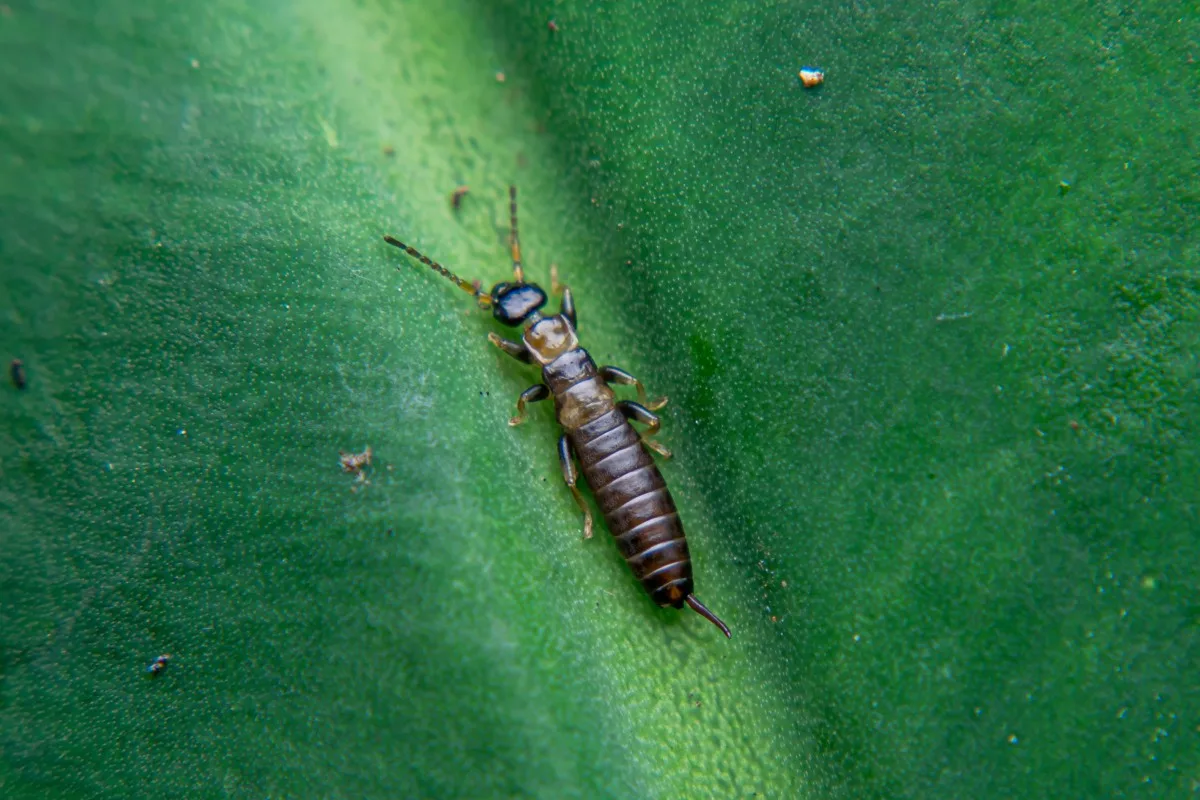
The common name comes from the Old English ēarwicga which literally translates to “ear insect” – all based on the superstition that earwigs will crawl into ears and burrow deep into our brains to lay eggs. Although this old wives’ tale has been totally debunked, the name stuck.
It doesn’t help that earwigs have a ferocious look, with a prominent pair of pincers at the rear. They seem to slither about when they move with their flat, elongated bodies on six short legs. Some species emit a foul-smelling yellow liquid when they feel threatened.
In other words, earwigs ain’t cute.
Despite all of this, earwigs are harmless to humans, but our relationship with them is a bit of a mixed bag. Being both heroes and villains in the garden, sometimes they are fierce warriors that defend our crops from harm, and at other times they are the ones wreaking all the havoc.
About Earwigs
There are roughly 25 species of earwigs that roam throughout North America, but the one you’re most likely to encounter in the garden is Forficula auricularia, the European earwig.
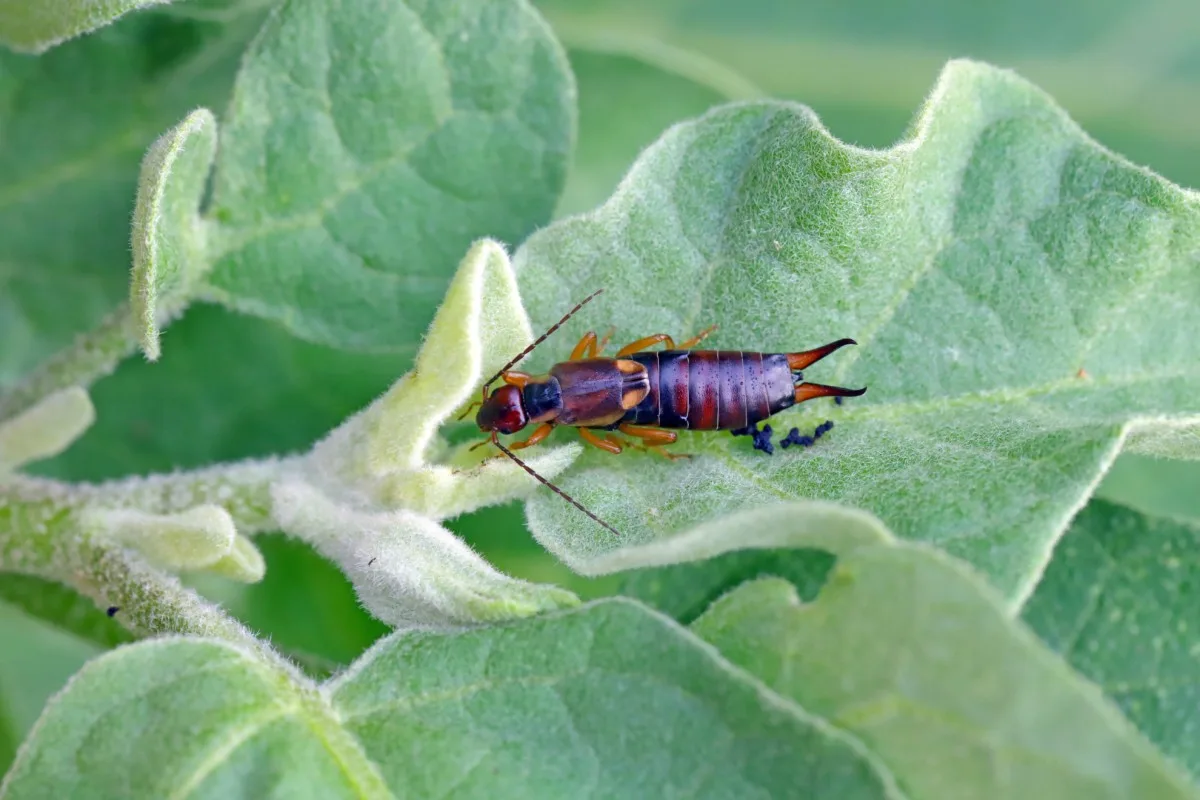
No matter the species, all earwigs have a pair of pincers at the rear, which makes them some of the easiest insects to identify. The forceps-like appendages (technically cerci) are curved in males and straight in females. These close together to grasp and are used in self-defense and to grab and hold prey.
As intimidating as the cerci look, getting pinched by an earwig doesn’t hurt, and they won’t go out of their way to attack humans.
Earwigs are most active at night and spend their days hiding in dark, cool, and moist places – under dead leaves, mulch or loose soil, in the dense growth of vines and weeds, beneath logs, bricks, and sometimes inside damaged fruit.
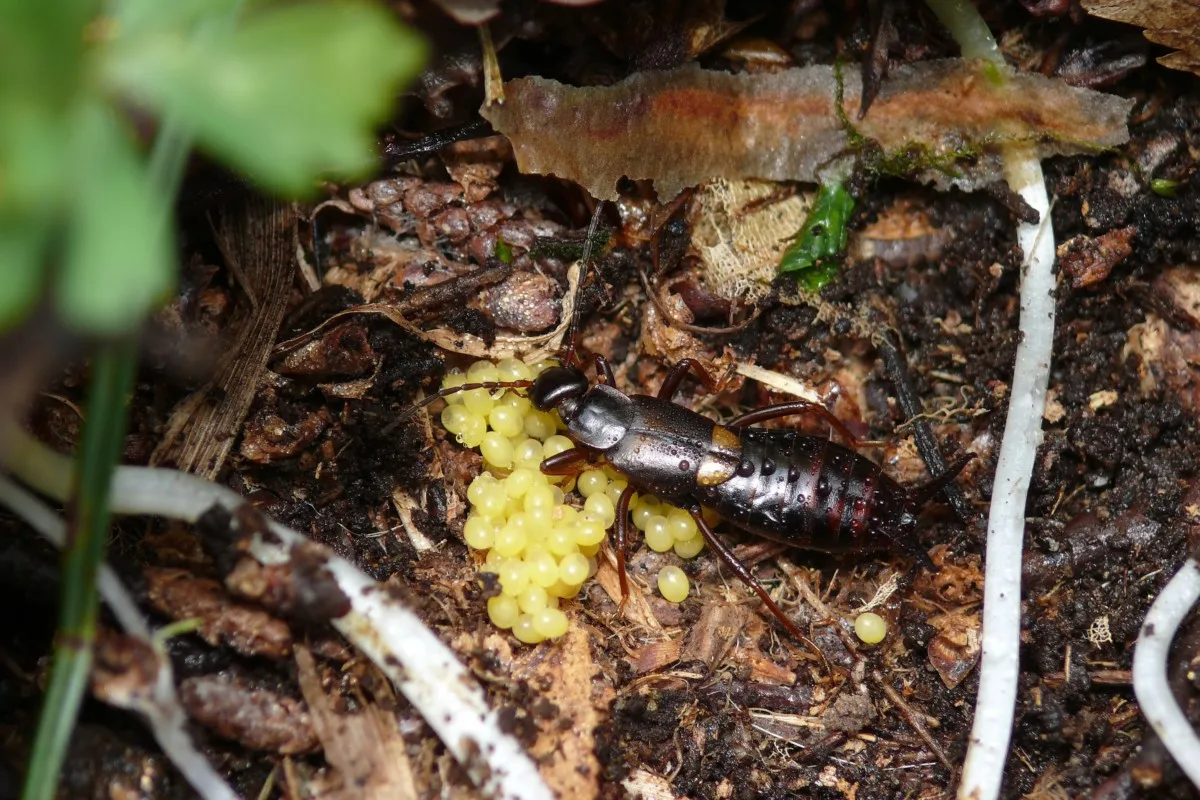
Earwigs mate in fall and overwinter in specially constructed nests about one inch underground. Males and females will spend the winter together until early spring, when the female will drive the male out of the nest and then lay eggs.
Female earwigs are among the few non-social insects that care for their young. She will guard and protect the eggs from predators and eat any mold or fungi that grow on them. After about a week, the eggs hatch, and she will keep the nymphs fed and protected until they’ve had their second molt.
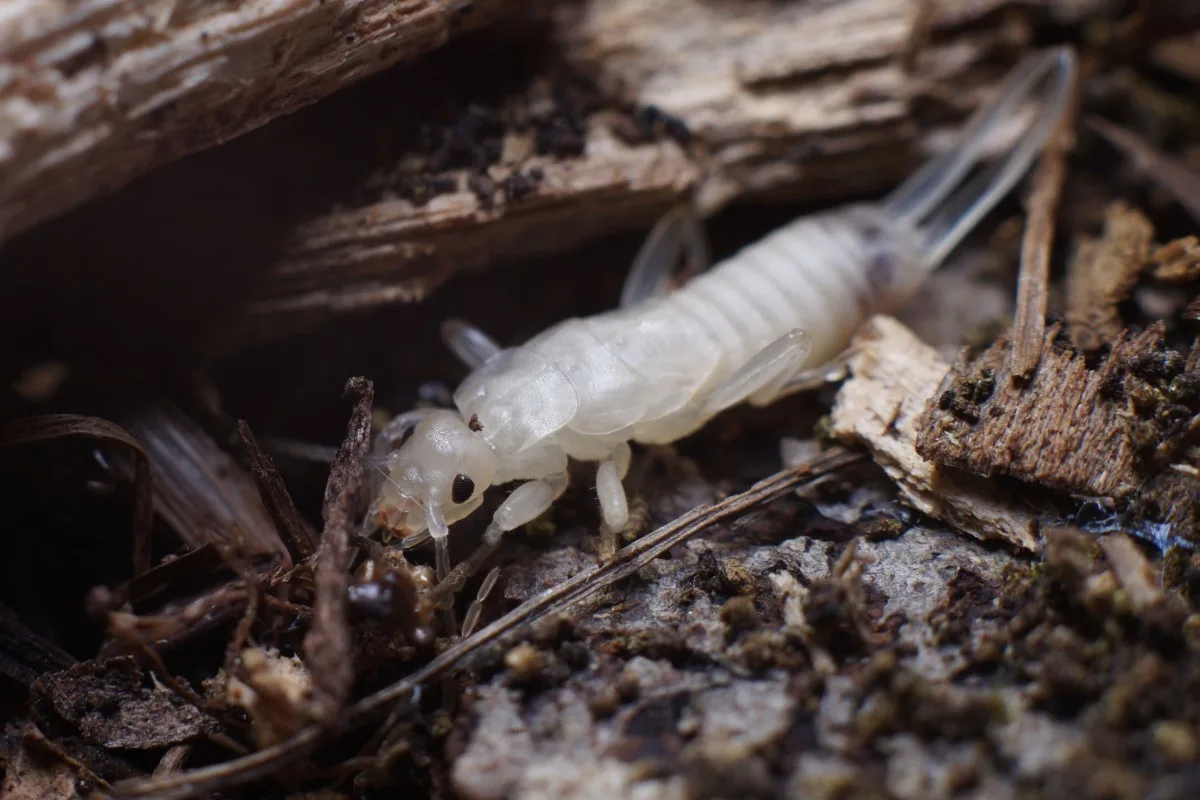
Nymphs mature into full-fledged adults by early July and will be living their best life in the garden ecosystem until autumn.
Earwigs – The Pest with Benefits
As scavengers, recyclers, and predators, earwigs are opportunistic omnivores with very hearty appetites.
Under the cover of night, they feed on a wide variety of dead and living things.
Like ants, earwigs help keep the ecosystem clean by breaking down organic matter and returning nutrients to the soil. In fact, earwigs in your compost pile are a great thing for speeding up the decomposition process.
While earwigs will content themselves with dead, damaged, and decaying plant life – which is the main staple in their diet – they will take a helping of healthy plant tissue with equal relish.
They enjoy the soft growth of tender seedlings and young shoots, leaving behind plants missing all or most of their leaves. In older plants, the leaves will have ragged-shaped holes and chewing around the edges whenever earwigs are at work.
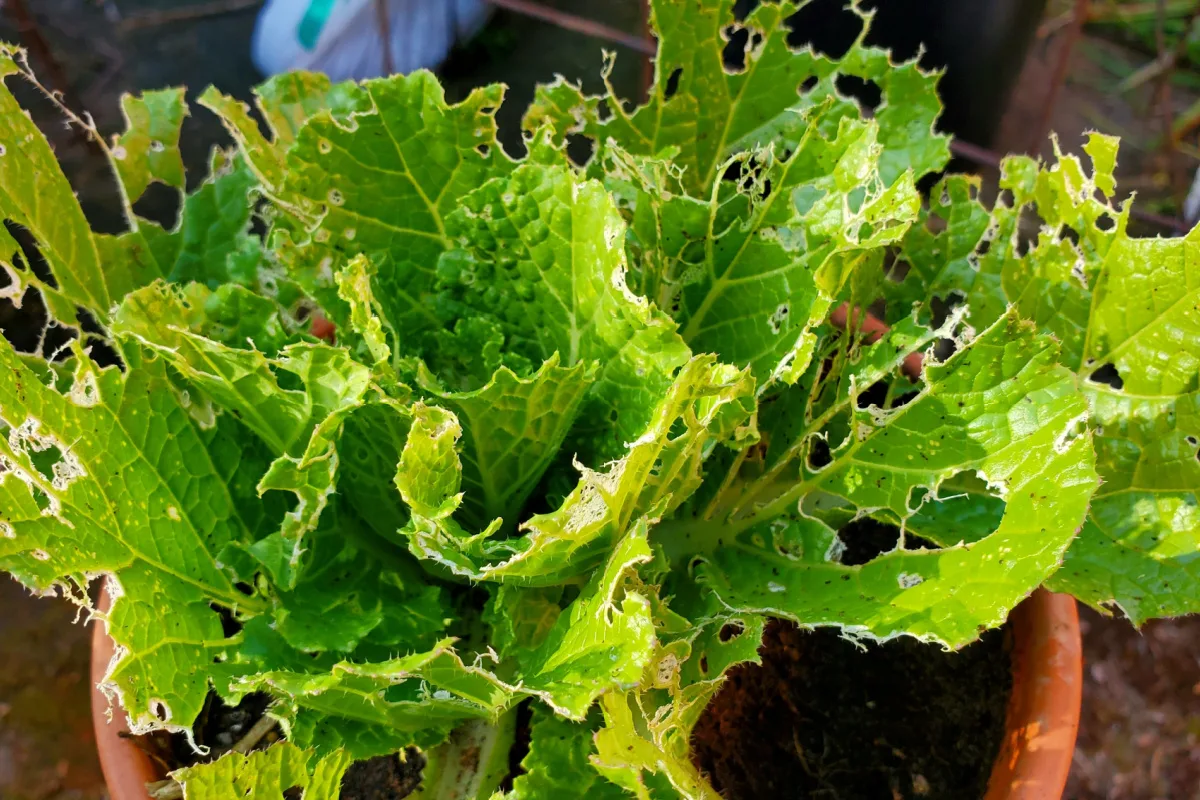
Earwigs are also fond of soft fruits like strawberries, blackberries, raspberries, apricots, peaches, and other stone fruit. When nibbled on by earwigs, the fruits will have gouges in the flesh that tunnel deep inside. Corn is another prized food, and earwigs will feed on the silks, disrupting pollination and leading to poor kernel development.
The ornamental garden isn’t safe from the earwig’s ravenous cravings either, and they will chew into the buds, petals, and foliage of zinnias, dahlias, marigolds, hostas, and butterfly bush.
When earwigs aren’t eating leaves, flowers, or fruit, they are off hunting other insects. Those pinchers are useful for capturing all sorts of pests – especially aphids, scale insects, whiteflies, mites, spiders, caterpillars, and other soft-bodied bugs. Earwigs will also chow down on all manner of insect eggs too, helping to keep the overall pest population low.
6 Ways to Manage Earwigs in the Garden
As you can see, earwigs don’t fit neatly into the good guy or bad guy box.
Usually, earwigs aren’t a significant threat in the home garden. Sure, they will gobble up seedlings and cause unsightly holes in flowers, leaves, and fruit, but they don’t spread disease and rarely kill plants outright.
And they do eat plenty of garden pests that would do more harm to your beloved cultivars without earwigs standing in their way.
You can strike the right balance with earwigs by protecting your plants from harm while also reaping the benefits of biological pest control and improved organic matter recycling.
Here’s how:
1. Clean Up the Garden
An important first step in limiting the number of earwigs hanging around your property is to remove their potential hiding spots.

Move piles of leaves, wood, brush and grass clippings far away from vegetable and flower gardens.
Place risers under flower pots and containers to lift them up and keep the ground beneath them dry.
Pull up weeds and dense ground covers like ivy that creep too close to your prized plants.
Organic mulches can also harbor earwigs. When earwig populations are particularly bad, you might need to thin it or take it out entirely.
2. Use Row Covers in Spring
There are few things more disheartening than seedlings that are here one day and gone the next.
Seedlings are fragile little things, but they can be protected with lightweight row covers in spring until they are strong enough to withstand a little nibbling.
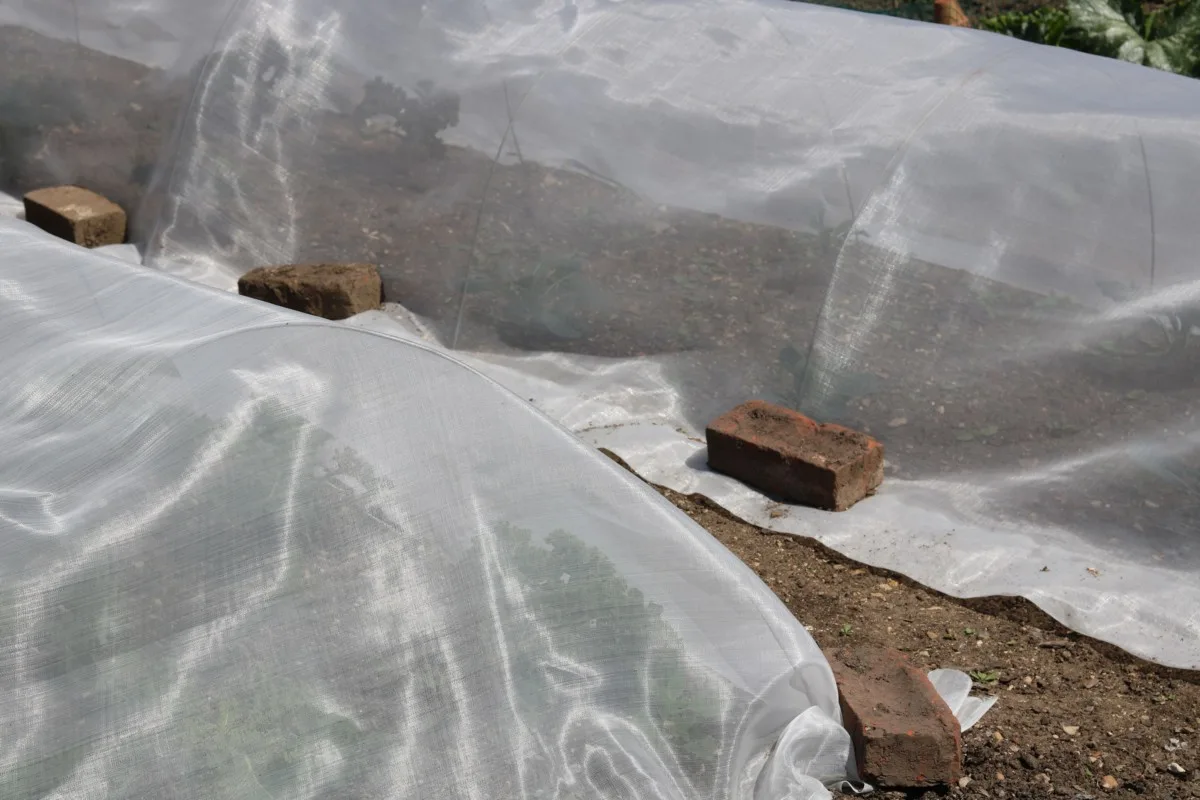
The white, gauzy fabric lets in air, water, and 80% to 90% of sunlight but blocks out several garden invaders – earwigs, as well as caterpillars, aphids, thrips, Japanese beetles, cucumber beetles, flea beetles, root maggot flies, and larger critters like birds, chipmunks, rabbits, squirrels, and deer.
Floating row covers are laid directly over crops, leaving enough slack in the material so it can expand as plants grow. Or the cloth can be raised up and supported with hoops fashioned from a flexible wire.
To be effective as an insect barrier in either setup, the edges of the row cover must be buried completely. Dumping shovelfuls of soil around the perimeter of the fabric to tamp it down will ensure the cover is easy to remove when you need to weed.
Row covers are taken off for the season when insect-pollinated plants start to bloom.
By this point, your plants should be big and strong. Having healthy, well-established, and mature plants is truly the best defense against grazing garden pests of any kind.
3. Safeguard Your Fruit
Berries and drupes (stone fruits) are the earwig’s favorite fruity snacks. You’ll know earwigs are the culprits by the deep tunnels they drill inside so they can get at the softer flesh.
Though earwigs damage and deform the fruit, it doesn’t make the fruit inedible. To save the harvest, cut away the holes made by earwigs and keep the rest.
To deter earwigs from your fruit trees and shrubs, remove nearby hiding places and sheltering spots. Prune away suckers growing at the base of trunks and keep the site clear of all weeds and brush.
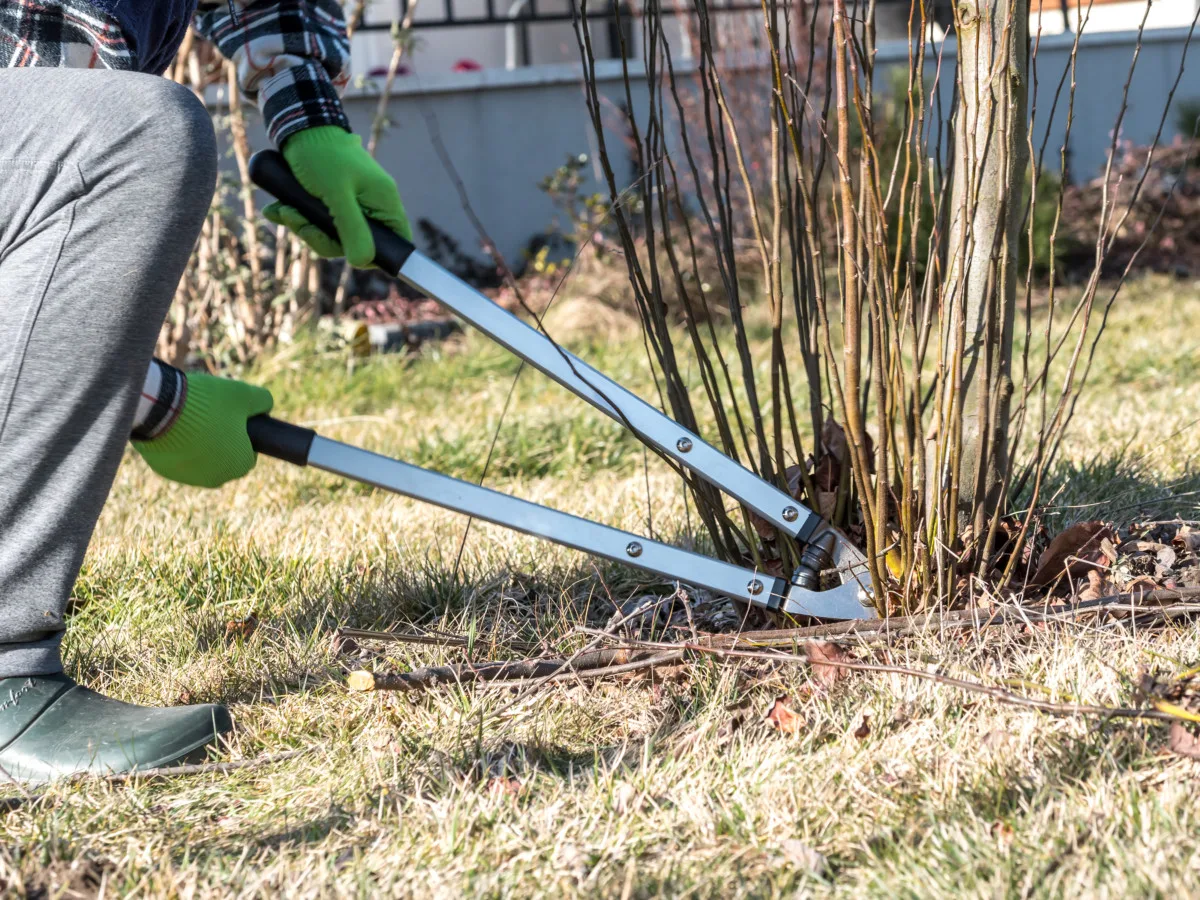
Pruning fruit trees and thinning the fruit can go a long way toward avoiding an all-out earwig infestation. Be quick about harvesting and pick the fruit as soon as it’s ripe.
If earwigs are a recurring issue, sticky bands offer good control against them and other crawling, canopy-dwelling pests. Sold at most garden centers, sticky bands are coated in grease or non-drying glue on one side. The bands are wrapped, sticky side out, around the tree trunk about 4 feet off the ground. The greasy substance will act as a physical barrier that earwigs, caterpillars, aphids, weevils, and gypsy moths can’t cross.
4. Encourage the Earwig’s Natural Predators
You can go years without having much of a problem with earwigs. Then one summer, when the environmental conditions align perfectly, you’ll see earwigs everywhere.
A mild winter followed by a humid and warm spring season can create the perfect situation for earwig populations to explode. This is because more adults survived the winter in their underground nests, and more adults means more eggs were laid. Each female will lay 20 to 80 eggs at a time, and in a particularly balmy and warm spring, the eggs will hatch quicker, and the nymphs will grow and molt faster.
The best check on excessive earwig populations is to encourage their predators to patrol your lands – and earwigs have many natural enemies that will hunt them down for a protein-packed lunch.
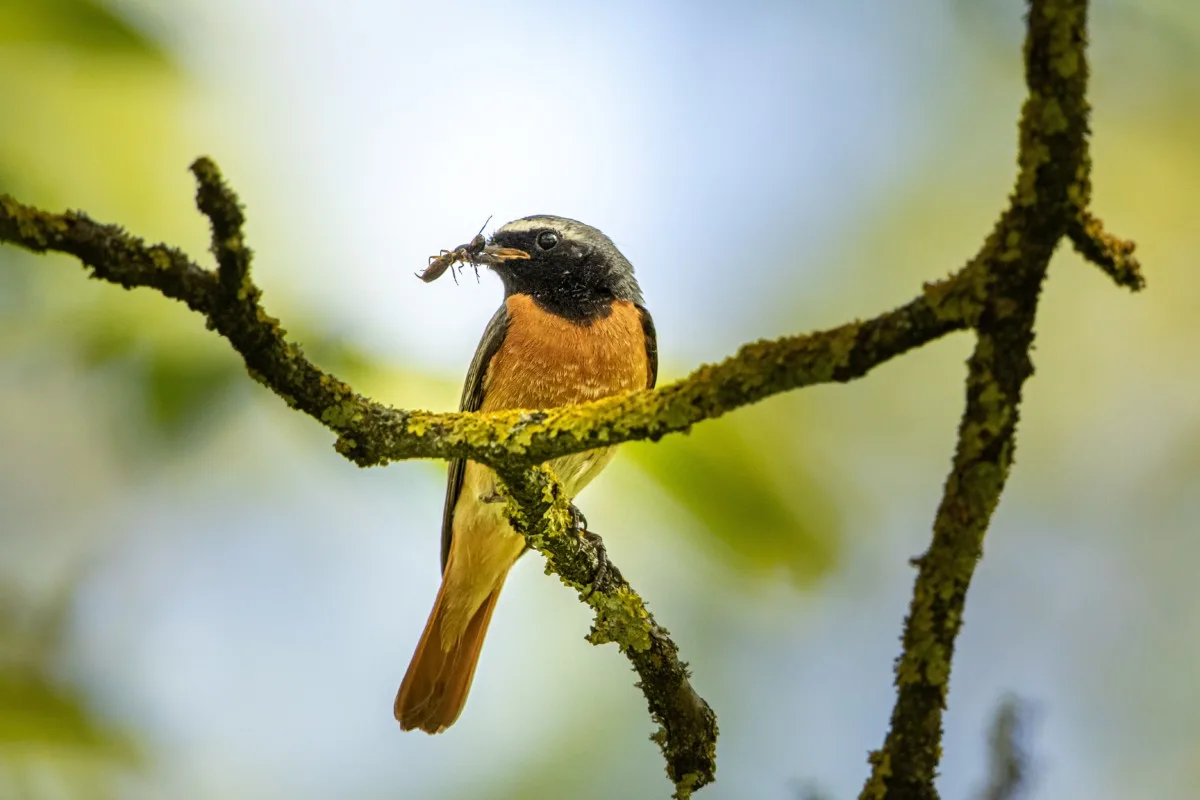
Birds are a joy to watch, and they come with the wonderful bonus of providing excellent pest control. Our feathered friends will tirelessly work over the garden, scouring and sussing out the earwig’s daytime hiding nooks. Make your garden more attractive to birds by adding birdbaths and birdhouses to the landscape and growing more trees and shrubs for them to perch in.
For the night shift, when earwigs are out and about and actively feeding, attracting bats will also do a heck a lot for keeping their populations down. From dusk till dawn, bats will hunt down and eat 3,000 to 4,200 insects every evening. Make your yard more inviting to bats by growing night-blooming flowers, providing a water source, and hanging up a bat house.
Several other creatures will do their part and eat up plenty of earwigs, including frogs and toads, lizards, spiders, and wasps.
5. Set Out Shelter Traps
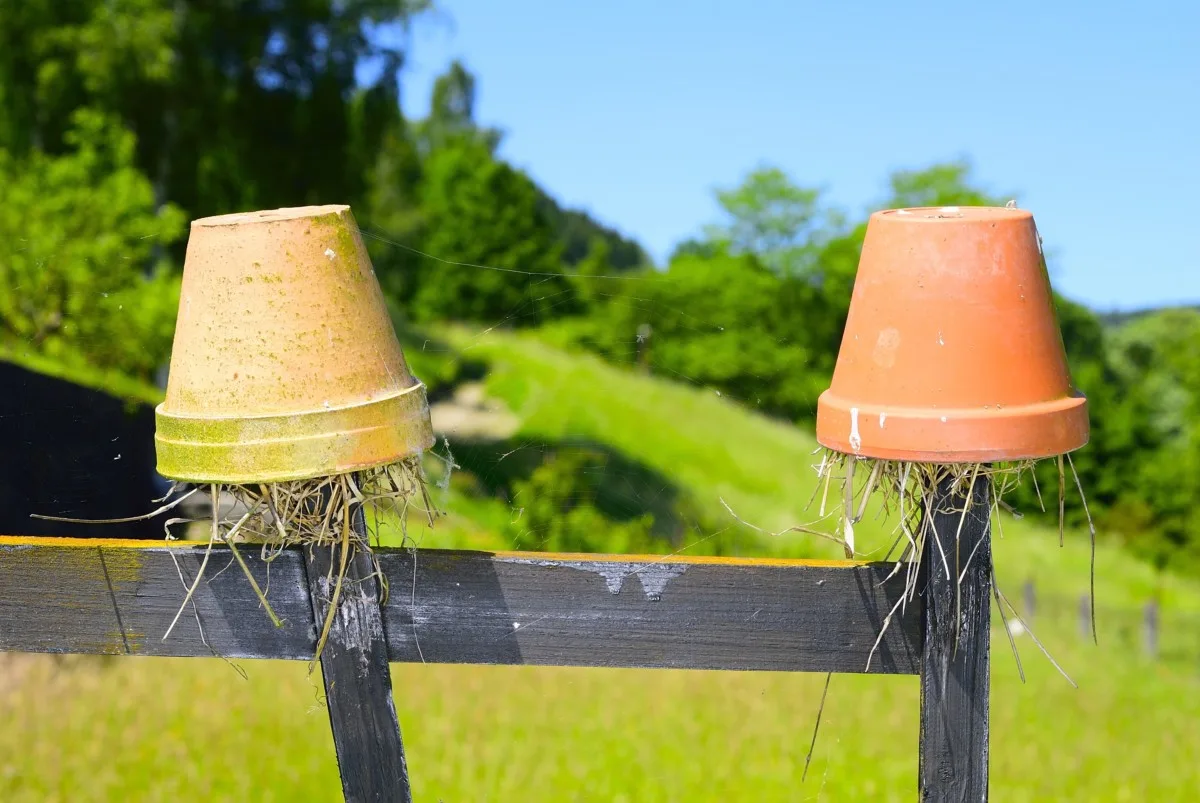
Even though earwigs aren’t social insects, they usually congregate together during the day in tight hiding spots. A glut of earwigs sheltering under a rock happens because of their aggregating pheromones that signal to nearby earwigs that they’ve got a nice little place of refuge.
We can use this knowledge to our advantage by setting down decoy shelters to trap and remove masses of earwigs from the garden, all at once.
Lay out some rolled-up newspaper, bamboo tubes, folded cardboard, or a short piece of hose on the soil next to plants just before dark. The next day, carefully pick up the traps and shake the earwigs sheltering inside into a pail of soapy water. Or save them for your chickens.
Repeat the procedure every day until you’re no longer catching earwigs.
Another earwig trapping contraption involves an upturned pot filled with straw and placed on a cane or stick. Here’s a great tutorial for making your own.
6. Make Oil Traps
Another effective way to eliminate an overabundance of earwigs in your yard is to make a few oil traps.
Use a shallow can, such as an empty cat food or tuna can, and bait it with a half-inch of vegetable oil and a drop of bacon grease, soy sauce, or fish oil. Sink the can into the ground, so the top of the can is at soil level.
Set the oil traps next to your earwig-ravaged plants and check them a few times a week. Dump out the collected earwigs and refill the cans with fresh bait.
What to Do When Earwigs are…Inside the House
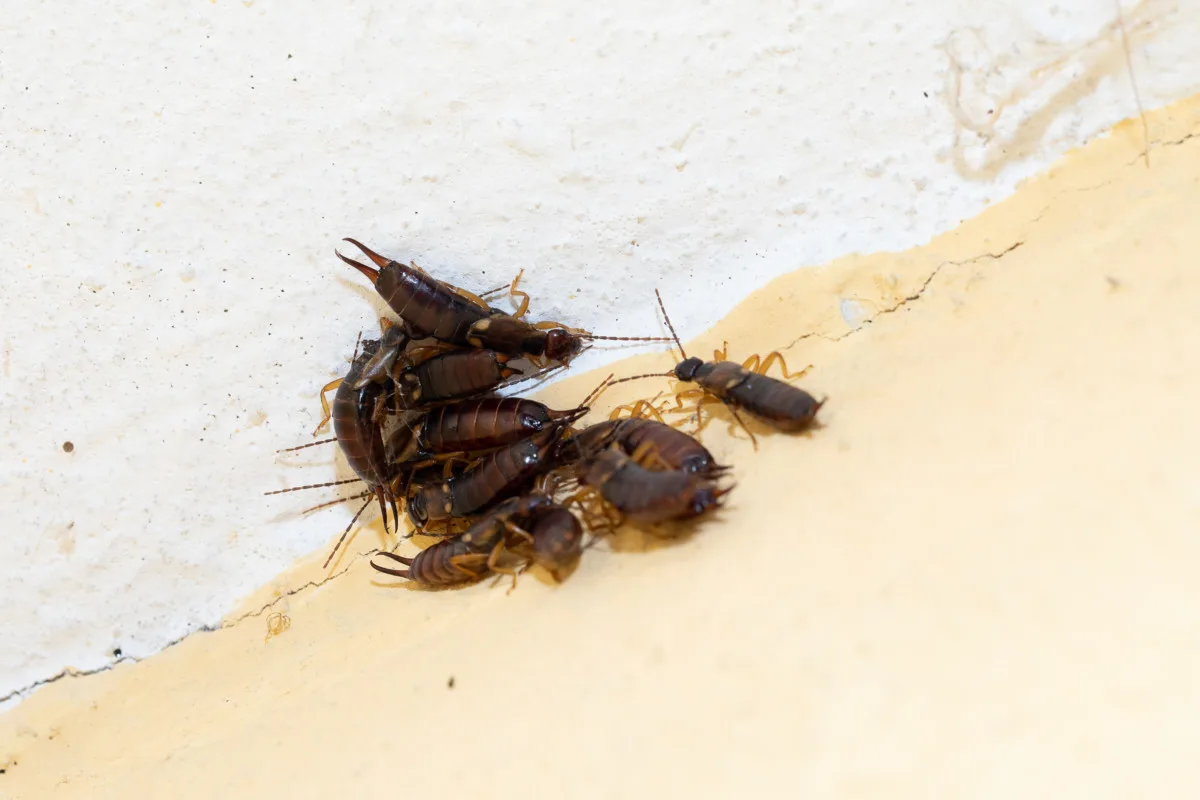
Like boxelder bugs and lady beetles, earwigs are more of an accidental home invader.
They may wander indoors looking for shelter, but they don’t damage property, raid food pantries, or reproduce.
Any you find inside can simply be swept or vacuumed up and dunked in soapy water before discarding.
Look for entry points when you have repeated encounters with earwigs in the basement, underneath sinks, and other dark and dank areas of the home. Their flat bodies make it easy for them to crawl through narrow gaps, so be thorough when sealing around window sills, baseboards, and door thresholds.
As in the garden, rubbish stored around the exterior of the house can make indoor entry more attractive to earwigs. Leaves, newspapers, firewood, and other piles of organic matter should be cleared or moved away from the walls of your home.
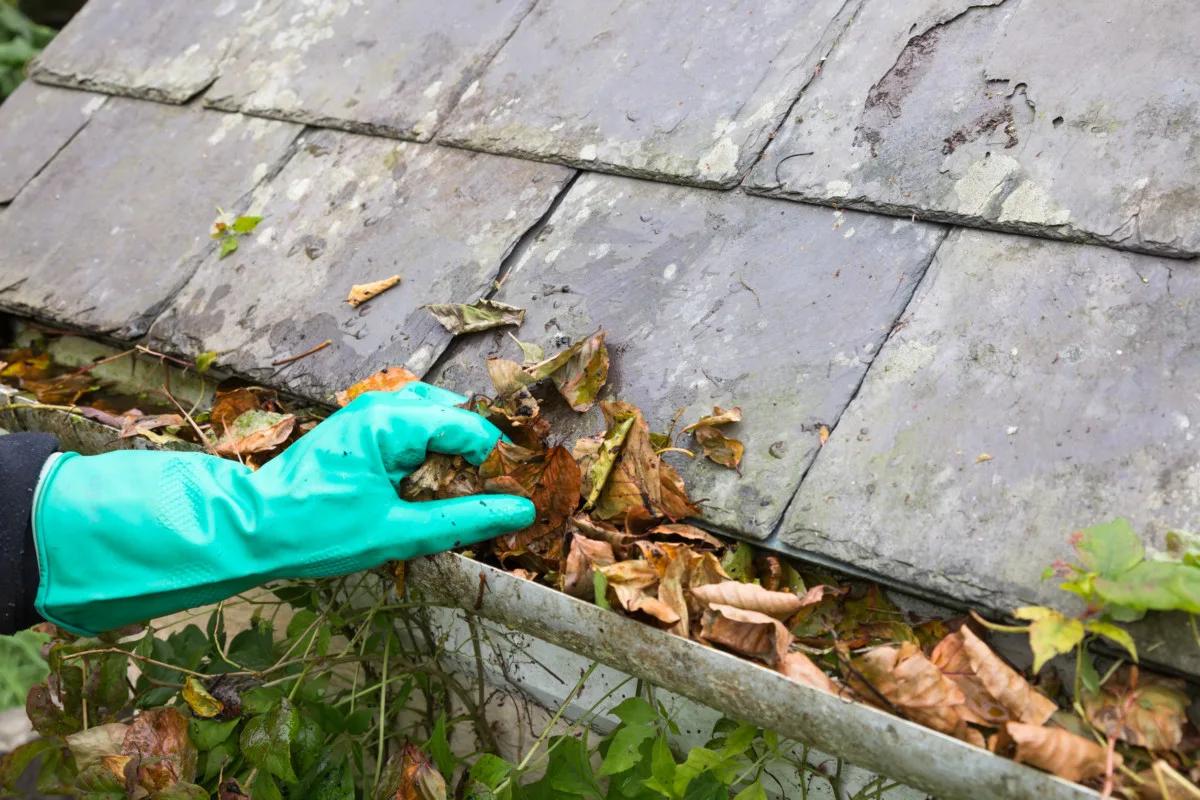
And don’t neglect your gutters. Leaf-clogged eavestroughs are another preferred earwig refuge, so make sure you clean these out every autumn.

Get the famous Rural Sprout newsletter delivered to your inbox.
Including Sunday ramblings from our editor, Tracey, as well as “What’s Up Wednesday” our roundup of what’s in season and new article updates and alerts.

